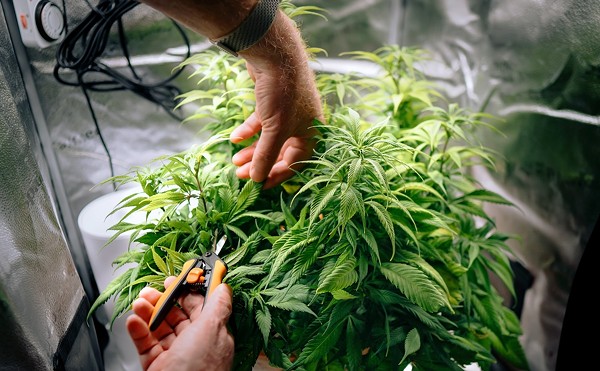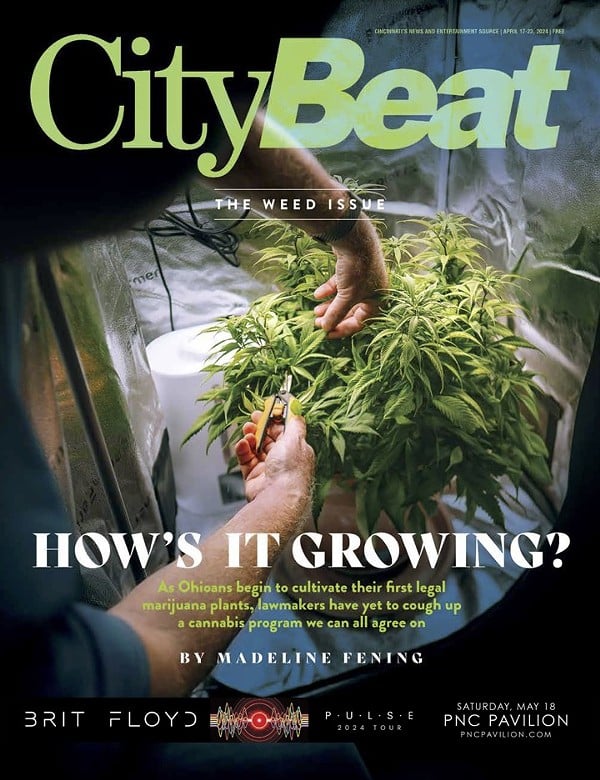T
he weather in Cincinnati likes to keep residents on their toes. One day the sun will grace us with 60-degree temperatures, the next day we wake to frost on our windshields. It’s no longer wintertime but not quite spring, so what is there to do? The Civic Garden Center has the right ingredients to give you a jump-start on your springtime landscaping, fertilizing and composting.
The No. 1 component for welcoming spring is to do your research. Instead of mapping out where you wish to plot your plants, you might want to investigate the ecological design of your garden. This gardening style is called permaculture.
“It’s thinking and designing our gardens, homes, communities and bioregions after the regenerative principles of nature,” says Braden Trauth, a certified permaculture instructor at the Civic Garden Center (CGC). “It’s learning how to become native again.”
Ideally, when prepping any landscape for spring it’s best to start in the fall, but permaculture doesn’t necessarily focus on the weather. Trauth says permaculture is more about observing the ecosystem’s natural cycles. The best way to see how nature maintains its nutrients and fertility cycle is through composting, microbiota and decomposers. It’s also in how animals naturally fertilize. And, yes, there is a difference between compost and fertilizer. Fertilizer gives the plants nutrients. Compost nourishes the soil.
Cara Hague, horticulturist at the CGC, says the proper mixture of carbon-based materials (“browns”) and nitrogen-based materials (“greens”) must be a 30-1 ratio. “If you had 30 cups of fallen leaves, you would want one cup of coffee grounds, kitchen waste or grass clippings in order to make a balanced mix,” Hague says.
She also recommends giving your compost a good churn every time you add to it, because the more often you turn your pile the sooner you develop compost. You should apply this garden delicacy to your beds at least once a year, but it won’t hurt to scatter it in the spring and fall.
You’ll also want to be sure you’re not faint of smells, because there is something different in the air when it comes to natural fertilizer. According to Trauth, aged horse manure does the job. “It’s not the best, but it’s readily accessible,” he says.
For the most successful batch of manure, start stockpiling fresh droppings in the fall. “It takes 180 days for horse manure to age. Come spring, it should be ready to go,” Trauth says. Depending on the amount of rotted scat you’ve saved up, you should be able to apply it to your garden two or three times during the growing season. If you don’t have access to manure, Marvin’s Organic Gardens’ organic fertilizer is the next best thing, according to Ryan Mooney-Bullock, garden learning station coordinator at the CGC.
After you shake the smell off your clothes, it’s time to think about how you want to till and aerate your garden. When it comes to aerating an old bed, Trauth lets the chickens take care of it.
“I let the chickens run through the garden, letting them dig up the dirt. They aerate the soil by looking for bugs and seeds,” he says. “Once I start planting though, they’re out of the garden.”
He can then use their nutrient-rich fecal remains for more fertilizer, and collect their eggs for a sunny-side-up breakfast.
Mooney-Bullock also believes you should steer clear of the hardware store when it comes to tilling.
“Once a garden is set, you don’t need to till,” Mooney-Bullock says. “You can mix your compost into the soil, but don’t till. Tilling disrupts microorganism communities. We recommend building up beds so that you’re adding compost to the top of them.”
The next step is figuring out what you want to put in your landscape. If it were up to Trauth, his perfect garden would have a combination of perennial herbaceous and woody food-bearing plants.
Trauth believes that there are larger benefits to using natural and sustainable fertilizers.
“If we can design ourselves and our bioregion to live off of local resources and minimize resources from halfway around the world, we’ll save fossil fuel and see oil prices (among other prices) go down,” he says. “A tree doesn’t get its food sources from halfway around the world. We need to shift from net consumers to net producers.”
THE CIVIC GARDEN CENTER offers several classes on permaculture, composting and other sustainable gardening practices. For more information go to www.civicgardencenter.org.





